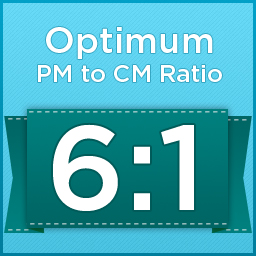Why Work Order Software is Critical to Optimizing Your Preventive Maintenance to Corrective Maintenance Ratio
 Are you a facility manager that is constantly trying to put out maintenance fires or inversely, doing so many unneeded preventive maintenance procedures that you can’t find time to do corrective actions?
Are you a facility manager that is constantly trying to put out maintenance fires or inversely, doing so many unneeded preventive maintenance procedures that you can’t find time to do corrective actions?
You might have found yourself stuck in an inefficient preventive maintenance (PM) to corrective maintenance (CM) ratio. While both are natural functions of any activity, most facilities are either doing too much or too little planned maintenance work. Here is where work order software can help.
Work order software, no matter the vendor, is designed to manage maintenance work more efficiently by instantly sending notifications when an emergency occurs or when equipment is scheduled for a planned maintenance inspection. The ability to queue work as it’s needed reduces response times and the tendency to defer needed repairs.
What’s most important about work order software as it pertains to keeping an efficient PM to CM ratio is its ability to record and report maintenance trends over time – hard to do this efficiently with paper only work records. If you start to notice your team is spending more time inspecting and not enough time maintaining, your ratio is off and labor resources are being misused.
According to an article written by Robert Call, John Day, Jr., a Manager of Engineering and Maintenance at Alumax of South Carolina, proved that a ratio of six PM tasks for every one discovered corrective action was an efficient recipe for scheduling preventive maintenance.
This means if you run a report on any one piece of equipment and find that, on average, less than one fault is noted for every six or more PM inspections, you are scheduling tasks too frequently.
Utilizing work order software enables you to tweak these PM schedules until the right PM to CM ratio can be established for each piece of equipment. A good place to start as you are creating PM schedules is to look at equipment average failure rates or their Mean Time Between Failure (MTBF). If a piece of equipment tends to fail, on average, every five months or so, schedule your PM inspections monthly.
If you don't have previous data to references, look at the manufacturer recommendations. While manufacturers tend to be more cautious with their PM recommendations, it’s better than taking a stab in the dark when setting up your schedules.
Ryan Noble
Ryan is Q Ware's Marketing Specialist.